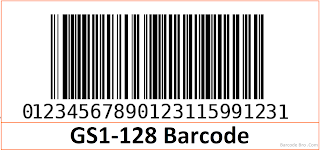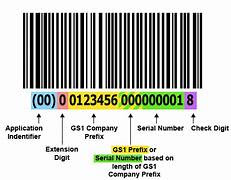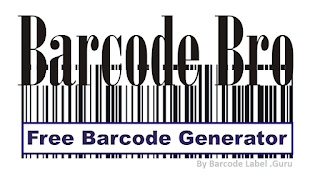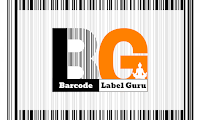What is GS1-128 barcode?
Every GS1-128 barcode begins with the ( FNC1) “Function Code One” character and an Application Identifier (AI) number. The AI defines a specific purpose for the data field after it. The combination of the AI and its data field is referred to as the element string.
What are the requirements for GS1-128?
The combination of the AI and its data field is referred to as the element string. Below are some of the requirements for GS1-128 and how to implement them in IDAutomation products. According to GS1-128 specifications, the height of the barcode should be 15% of the length or 0.50 inch (1.3 CM), whichever is greater.
How do I verify GS1 encoding?
When generating GS1 symbols, IDAutomation recommends testing the result with the Barcode Decoder App, which parses out GS1 data to verify proper encoding. Below is an example of the result using this app: Most scanners with built-in decoders do not decode FNC1 codes in GS1-128 (UCC/EAN-128) barcodes.
What is the GS1 DataBar barcode font package?
Created for various operating systems and locales including Double Byte ... The GS1 DataBar barcode font package includes several barcode fonts in multiple formats, and multiple variants with royalty free rights to use IDAutomation font encoder tools as necessary for application integration.
Generate GS1-128 barcodes using the 18 various barcode fonts included to meet multiple GS1-128 specifications.
A collection of 18 different Code 128 font sizes that precisely match any GS1-128 specification, such as SSCC, GDTI, GRAI, GIAI and GLN, UDI, HIBCC UDI, ICCBBA UDI, including USPS Special Services barcodes.
Multiple font types are included in the package, such as Digitally Signed TrueType, OpenType, and PostScript fonts.
Compatible with Windows, Mac, Linux, iOS, Android, and Unix-based systems.
Includes Crystal Reports Formulas which may be easily applied to a report.
Compatible with multiple double-byte character sets including Japanese, Chinese, and Korean.
All barcode fonts require special formatting so that the data, when the barcode font is applied, will meet GS1 requirements. Over 30 royalty-free font encoders, macros, and plug-ins are provided to perform this automatically, including a stand-alone Font Encoder Software Application.
Font encoders provided support for an automated method of calculating MOD 10 characters where required.
VB script and VBA included with this product automatically format text and add parentheses around appropriate AIs.
With a purchase of the Developer License or above:
Web Fonts are included in WOFF, EOT, and SVG formats to easily display barcodes in any web browser.
A silent installation executable is included with a source to create custom installations.
.NET Standard & .NET Core source code in C# and VB.NET with examples and assembly.
Additional font encoders are provided including SSRS, ANSI C, C++, C#, VB.NET, Java, JavaScript, Python, Oracle, and a .NET Assembly.
Custom modifications, distribution rights, and other benefits as outlined in the license chart.
Symbol Size:
According to GS1-128 specifications, the height of the barcode should be 15% of the length or 0.50 inch (1.3 CM), whichever is greater.
Within most GS1 applications, the X dimension may range from 10 mils (.025 cm) to 40 mils (.1 cm). When the X dimension used is between 10 and 16 mils, the symbol should be 0.50″ tall. When the X dimension used is between 16 and 40 mils, the symbol should be 1.25″ tall. The X dimension of 10 mils (0.10″) is recommended for use with most hand-held scanners.
The IDAutomation Code 128 Barcode Font IDAutomationC128M and Universal Barcode Font IDAutomation Uni M are specifically designed to match the GS1 size of 0.50″ tall and an X dimension of 10 mils when printed at 12 points.
The GS1-128 Barcode Font Suite is a collection of GS1 fonts designed to match any GS1 specification including several sizes that are 0.50″ (13mm) to 1.25″ (32mm) in height at various required X dimensions.
Every GS1-128 barcode begins with the (FNC1) “Function Code One” character and an Application Identifier (AI) number. The AI defines a specific purpose for the data field after it. The combination of the AI and its data field is referred to as the element string. The AI is represented with parentheses around it in the Human Readable representation below the barcode. Multiple element strings may also be encoded according to GS-1 specifications. Variable element strings should be encoded last in the symbol and FNC1 characters must be encoded between two or more variable-length element strings.
A GS1 MOD 10 check digit is often required when implementing GS1-128 barcodes for various specifications; the AI is usually not included in the MOD 10 calculation. If a MOD 10 check digit is needed, it may be either pre-calculated or calculated in the component at the time the barcode is generated.
To enable IDAutomation barcode products to calculate the MOD 10 when the barcode is created, the ApplyTilde property must be enabled and the format ~m?? must be used where ?? is a 2-digit number representing the number of characters preceding the tilde on which to base the Mod 10 calculation.
For example, entering the data of ~2120000801234999999999~m17 generates a barcode encoding the FNC1 character followed by an AI of (00) and the number of 008012349999999997.
This MOD 10 calculation may be checked online with the IDAutomation Online Barcode Font Encoder by entering the number 00801234999999999 in the “Data To Encode” field and choosing the “MOD 10” option. GS1 also offers an online check digit calculator with manual calculation examples.
The GS1-128 (formerly UCC/EAN-128) Symbology is a subset of the more general Code 128 Symbology. By agreement among AIM, Inc., GS1 (EAN International and the UCC), use of the Function 1 Character (FNC1) in Code 128 Symbols in the first symbol character position following the Start Character has been reserved exclusively for the GS1 System.
GS1-128 was developed to provide a worldwide format and standard for exchanging common data between companies. While other barcodes simply encode data with no respect for what the data represents, GS1-128 encodes data and encodes what that data represents.
The encodable character used by GS1-128 Symbology is as defined by the International ISO/IEC 646 Standard.
GS1-128 encodes the so called Element Strings which are composed of an Application Identifier (AI) plus a data field. GS1-128 has a list of predefined Application Identifiers (AI) which identifies the meaning and format of the data following it. The AI is a 2, 3, or 4-digit number and it is enclosed in parentheses when printed below the barcode
S1-128 and ITF-14 are highly versatile 1D barcodes that enable items to be tracked through global supply chains. The GS1-128 barcode can carry any of the GS1 ID keys, plus information like serial numbers, expiration dates and more. The ITF-14 barcode can only hold the Global Trade Item Number (GTIN) and is suitable for printing on corrugated materials.
Symbol ID: C1
Capacity: 48 Alphanumeric capacity (per symbol, multiple symbols may be used)
Supports all GS1 keys
Does support attributes
The GS1-128 code is a normalization of the standards from http://www.gs1.org/ based on the BCGcode128. This code is an international standard which provides a way to exchange data between producers and distributors. The GS1-128 must start with the function 1 (~F1). It can contain multiple identifiers, however it mustn't be larger than 48 characters, this limit excludes the mandatory character ~F1. In order to facilitate the reading, the identifiers are surrounded by parentheses in the label; those parentheses are not encoded in the barcode.
Since the GS1 identifiers change often, we have separated the code in a separate package.
There are two standards for the GS1-128, the strict and legacy modes. In legacy mode, separators are added between each identifier. In strict mode, separators are added only if the content of your data doesn't cover the maximum allowed. In this mode, it is highly recommended to use the table C if you use only numbers in your barcode.
Comprehensive and profession VB.NET GS1-128 Barcode Creator Add-on from RasterEdge DocImage SDK for .NET is a time-tested and advanced GS1-128/EAN-128 barcode generating control. It enables users to generate GS1-128/EAN-128 barcode on five image file formats (including JPEG, PNG, BMP, GIF & TIFF) and three document files(including TIFF, PDF & MS Word) using VB.NET class code. GS1-128 (UCC/EAN-128), owing to its unique feature for carrying information of encoded data, is widely used in international trade field. Therefore, a mature GS1-128 (UCC/EAN-128) barcode generating SDK will bring great benefits to your business. To help VB.NET developers have a better grasp of how GS1-128 (UCC/EAN-128) barcode is generated on images and documents using VB.NET code, we provide this online tutorial for users.
RasterEdge GS1-128 (UCC/EAN-128) barcode creator SDK is a professional third-party barcode generating toolkit for .NET. This VB.NET linear barcode creator SDK combines advanced & high-quality GS1-128 (UCC/EAN-128) barcode generating features with mature document imaging technologies. Thus, using this GS1-128 (UCC/EAN-128) barcode generating component, VB.NET developers can easily generate and insert created linear barcode into target documents and images.
As is said above, RasterEdge VB.NET GS1-128 (UCC/EAN-128) barcode generator add-on is a fully-featured .NET solution. And the key features of this barcode creator control are listed below.
Easy to incorporate GS1-128 Barcode Creating capability within VB Windows application, VB class and console library
Compatible with the latest GS1 barcoding standard for high quality GS1-128/EAN-128 generation in VB
Use well developed and named RasterEdge .NET Imaging GS1-128/EAN-128 barcoding namespace in VB.NET
Free to generate GS1-128/EAN-128 in VB.NET project comlying with any VS and .NET Framework version
No need to work out checksum digit manually as it can be automatically calculated with VB.NET Imaging Barcoding tool
Set GS1-128 barcode related X, Y dimension, barcode width & height and four margin size in a few seconds
Adopt image processing API to rotate image with created EAN-128 barcode at any angle among 360 degrees in VB class
Adjust EAN-128 barcode image resolution in DPI to fulfill variable barcode image printing requirements in VB.NET
Use image saving options to store created barcode image as an independent image for better viewing
In daily-life applications, you may need to draw or add GS1-128 (UCC/EAN-128) barcode on some image files for certain purpose. Then this VB.NET GS1-128 (UCC/EAN-128) barcode generator add-on will be a great choice. Using the APIs that RasterEdge .NET GS1-128 (UCC/EAN-128) barcode creator add-on offers, VB developers can accurately draw a standard GS1-128 barcode on target image files (supported image formats are JPEG, BMP, GIF and PNG)
Currently, GS1-128 (UCC/EAN-128) barcode generator add-on for .NET, VB.NET has been widely used in document management and file tracking field. Different from other GS1-128 (UCC/EAN-128) barcode creator SDKs on the market, RasterEdge VB.NET barcode creator add-on allows developers to select one page from source document file (supported document files are PDF, Word, TIFF, Excel and PPTX) and insert a GS1-128 (UCC/EAN-128) barcode into selected document page with accurate location.
For Generating GS1-128 Barcode Image Visit







